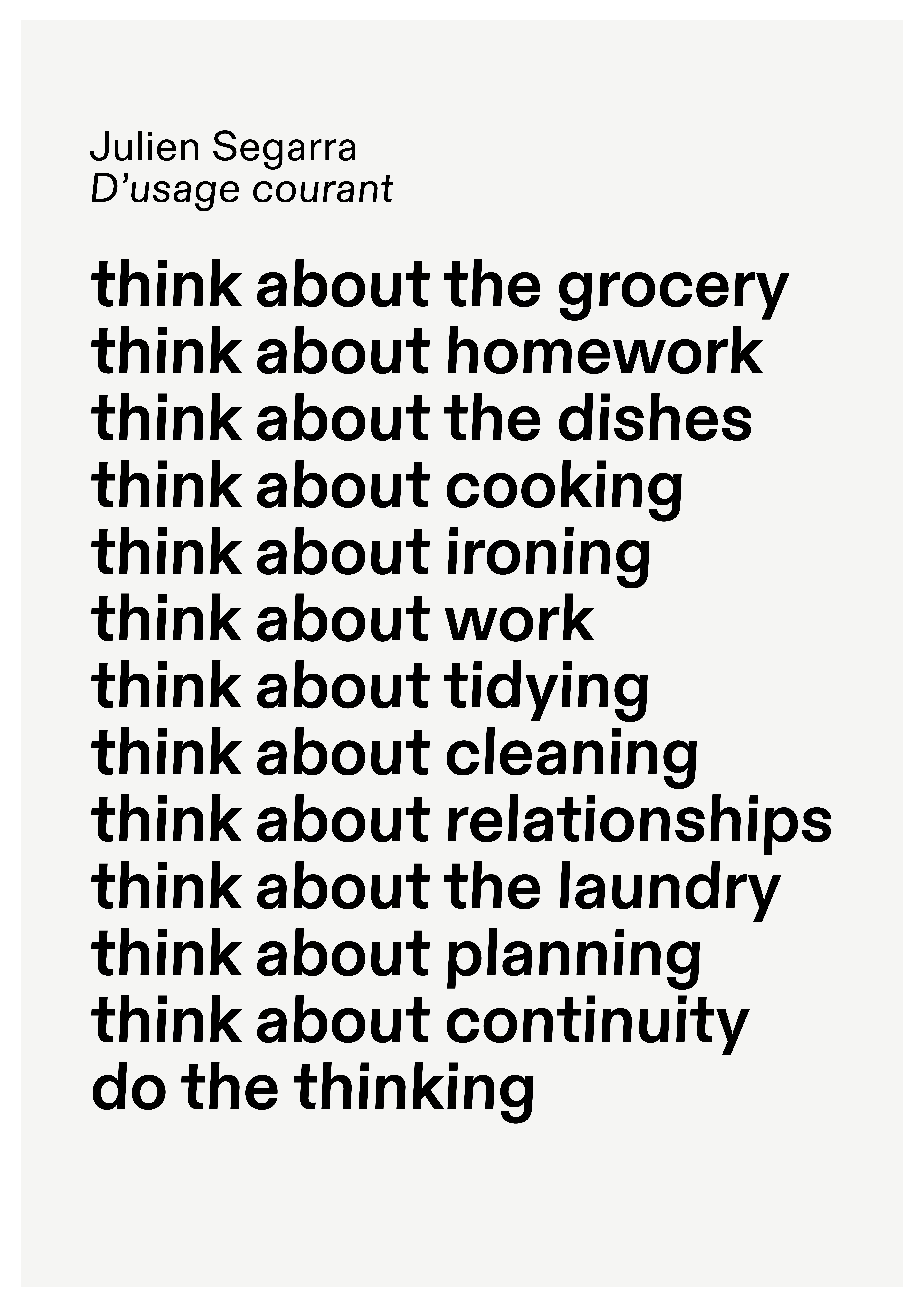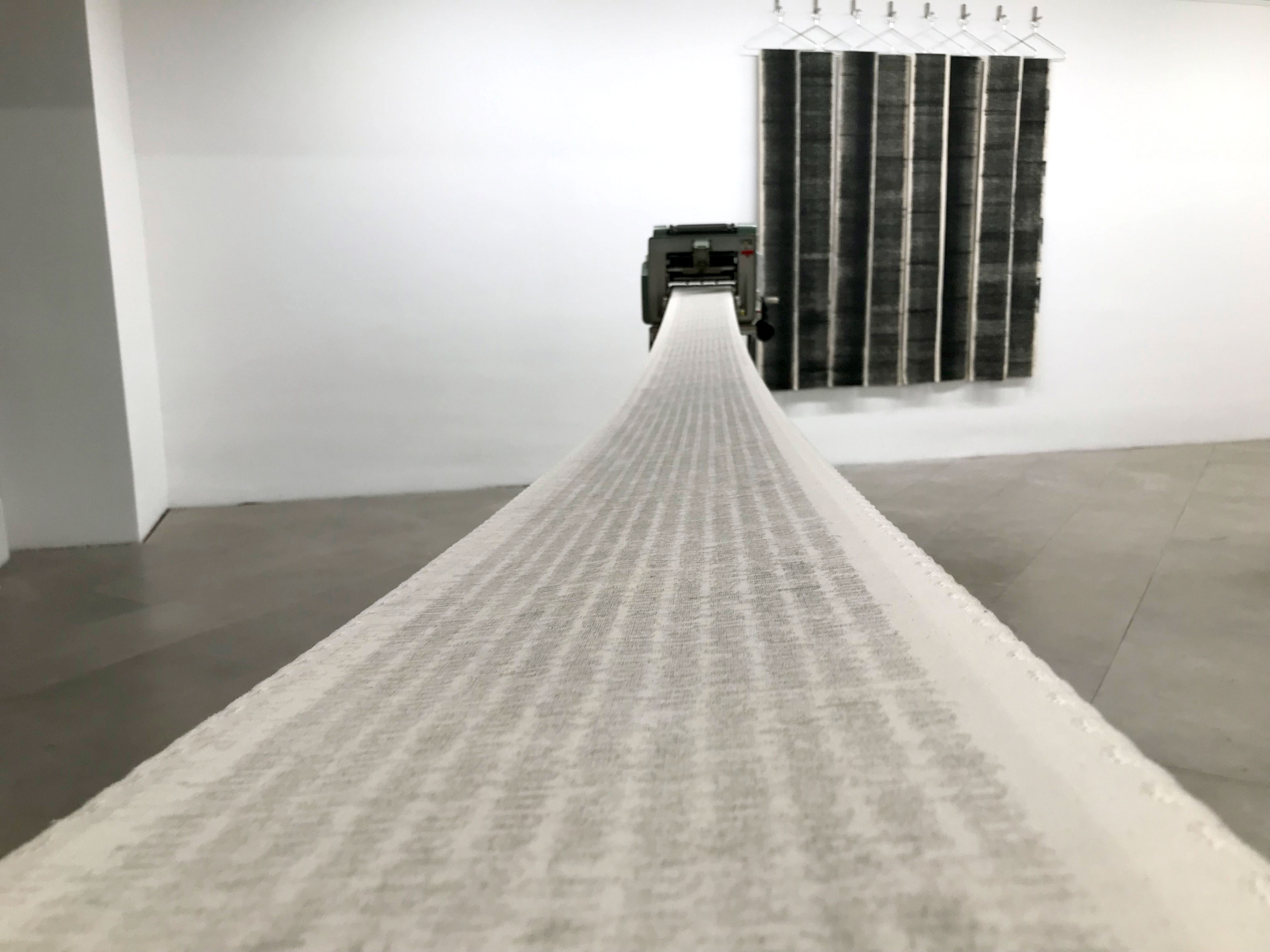
Performative installation
D’usage courant
2023
D’usage courant
2023
on the value of reproduction
Exhibit Eschenbachgasse,
Vienna AT
Exhibit Eschenbachgasse,
Vienna AT
- Banners installation
224cm x ongoing, printed cotton on clothes-hanger. - Mimeography on unbleached cotton
150gsm, 25x1200cm loop. - Stencil duplicators Gestetner
model 366 & 360, black oil-based ink. - Shading plates
laser cutted plexiglas 3mm fluo red, 20,7 x 8 cm each. - Sound recordings
mother, 22:01 min; 5 cis men, 23:10 min
The installation consists of three parts.
The continuous loop print shows a list of daily housework activities. Daily housework is one aspect of care work that is mostly done by women*. This is not only due to traditional concepts of men* and women* but is ingrained in our economy that is built on exploitation and devaluation of this care work. Care work is perceived as a permanent available resource at the service of our society.
The continuous loop print shows a list of daily housework activities. Daily housework is one aspect of care work that is mostly done by women*. This is not only due to traditional concepts of men* and women* but is ingrained in our economy that is built on exploitation and devaluation of this care work. Care work is perceived as a permanent available resource at the service of our society.


The loop is a symbol of time and continuity, an invariable succession of identical moments and tasks. But this does not withstand the accumulation of layers of traces printed on the textile. Like time carries memories of past events, each cycle is adding up to the previous, like layers of sediment piling up one onto another. The repetition of daily routines form an agglomerate dominated by fatigue, resilience and endurance.
The print is the result of a process of contact and release, which links it immediately to themes of touch, presence, and intimacy, but also loss, separation, and memory.*
The print is the result of a process of contact and release, which links it immediately to themes of touch, presence, and intimacy, but also loss, separation, and memory.*
* Jennifer L. Roberts, A. W. Mellon Lectures.


The printing medium is a fabric made of cotton pocket liner. Primarily used for the pocket’s inward side, it is usually intended to be invisible. Here it receives the ink and traces the activities of reproductive labor that are often unseen and more often unvalued.
The sound installation is the result of two conversations conducted by the artist. In the first conversation the artist speaks with his mother about her life and the care work she has done as a working mother of four children from the 70s to the 90s. The second conversation is a group discussion of five cis men between 19 and 70 who were invited to look at their own roles as partners, fathers, sons or flatmates and to critically question gender dynamics and everyday routines. In the juxtaposition of the two conversations, a space of untranslatability emerges that points beyond the individual perspective to the structures we have internalized through society and education.
The sound installation is the result of two conversations conducted by the artist. In the first conversation the artist speaks with his mother about her life and the care work she has done as a working mother of four children from the 70s to the 90s. The second conversation is a group discussion of five cis men between 19 and 70 who were invited to look at their own roles as partners, fathers, sons or flatmates and to critically question gender dynamics and everyday routines. In the juxtaposition of the two conversations, a space of untranslatability emerges that points beyond the individual perspective to the structures we have internalized through society and education.
The shading plates are linked to the stencil duplicators. These printing machines are the predecessors of today’s printers and were used in the 60s and 70s by secretaries and typists, positions predominantly held by women. The shading plates were one of the various accessories to embellish and render the prints unique. Through frottage the pattern was transferred from the plate to the stencil. Inspired by the Beauties series from Willie Cole and the rubbing series from Mona Hatoum, the five shading plates show imprints of the materiality of objects used in daily care work. They materialize the banal of everyday life permanently, revaluing them as artistic artifacts.


